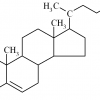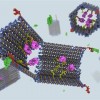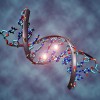Trying to unlock a new door…..
 How is drug development moving along? Well, this is a very good question for we are still plagued by some elusive diseases, cancer for example. There have been many drugs developed targeting proteins involved in disease states some of which have proven to be quite effective. However today the steam engine for identifying drug targets to proteins involved in disease is becoming ever more difficult.
How is drug development moving along? Well, this is a very good question for we are still plagued by some elusive diseases, cancer for example. There have been many drugs developed targeting proteins involved in disease states some of which have proven to be quite effective. However today the steam engine for identifying drug targets to proteins involved in disease is becoming ever more difficult.
Apparently over the past decade or so, the number of new drugs targeted toward disease has declined. This is primarily due to the fact that developing new medicine has become more difficult to do. It turns out that this is partly because we have sifted through all the ideal proteins that can be targeted by a drug. The remaining proteins are not ideal for developing a targeted drug. These proteins dawn small cavities or binding pockets and are relatively flat allowing for little to no interaction with a drug target. Its been said that 15% of proteins can be targeted by drugs. The percent of proteins that modify disease is 10 to 15 %. In order to alleviate this problem scientist have acquired the help of computer modeling to more thoroughly identify and test favorable small molecules that can block the activity of these undruggable protein populations related to disease. Dr. Stockwell an Associate professor at Columbia University, has attempted computer modeling and has come across compounds to target a class of E3 ligases, which are characteristically undruggable, and involved in just about every disease. Of these compounds one in particularly was a potent inhibitor. Dr. Stockwell will be publishing his findings in the next few months on the efficacy of the inhibitor. If it proves worthy this new drug will have an impact on cancer and neurodegenerative disease.
| Print article | This entry was posted by Jermel Watkins on November 28, 2011 at 5:59 pm, and is filed under Your Genes, Your Health. Follow any responses to this post through RSS 2.0. You can leave a response or trackback from your own site. |










